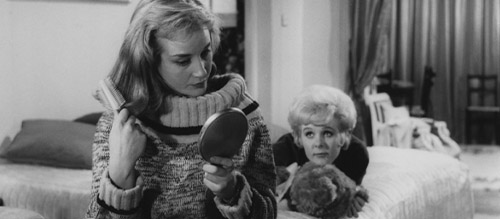5 Must-Watch Early British LGBTQ+ Films
Often, contemporary representations of LGBTQ+ lives are the ones that are most celebrated in cinema. It is perhaps due to the progress made by the community, both in society and in law, that people have been inspired to seek out the latest representation. There remains, however, a poignancy to looking at films released before the decriminalisation of homosexuality or in advance of other milestones in LGBTQ+ rights, and these are the films that will be looked at in this Movie List from The Film Magazine.
It is still as useful as ever to study the history of LGBTQ+ representation in cinema. And, although it may be uncomfortable to watch at times, there are moments of joy to be found; some may even surprise you.
Here are 5 Must-Watch Early British LGBTQ+ Films…
Follow the author of this article, Annice White, on Twitter @annicewhite_ and be sure to follow The Film Magazine (@thefilmagazine) to never miss another article like this one.
1. Victim (1961)
Victim (1961) is the first feature length film to the utter the word ‘homosexual’. It tells the story of Melville Farr (Dirk Bogarde), a married barrister who has a romantic relationship with a younger man, Jack “Boy” Barrett (Peter McEnery). Barrett is being blackmailed, along with other homosexual men, so Farrah decides to take on the blackmailer.
Victim is at its essence a Neo-Thriller that explores experiences and reactions to homosexuality in Britain.
Victim is bold by existence. It was released 6 years before homosexuality was legalised, yet by the nature of its premise everyone in the film is gay. These characters are not presented as morally wrong, but are shown sympathetically without the film being patronising. Victim is sympathetic and in many ways brave. Bogarde, who plays Farrah, had a morality clause as part of his contract with Rank Studios at the time of filming; if he was found to have done anything that was deemed ‘immoral’, his contract would be terminated. This included same sex relationships even though Bogarde was living with a man at the time.
2. The World Ten Times Over (1963)
The BFI have referred The World Ten Times Over as the ‘first lesbian film’, which may be a little bit of a reach. However, a British lesbian film is extremely hard to come across…
The World Ten Times Over is about two girls, Billa (Sylvia Syms) and Ginnie (June Ritchie), who work and live together. Everything about this film is implied, but it is generally understood that they are working as escorts. It is arguably this need to read into things that creates the idea that this is a lesbian film – perhaps due to the film wanting to appear covert in its presentation of lesbianism, it doesn’t rely on lazy stereotypes, nor does it sexualise them.
The ‘lesbian’ element of their relationship can be just as easily read as a close female friendship. They live together, but so do a lot of women. Their relationships with men are not just for survival. It is only in the end scenes of the film, where they say ‘damn them all’ (about men) and place an arm around each other, that the real hint of a lesbian relationship is presented.
Lead star Sylvia Syms has since said: “as far as I was concerned, my character was in love with June Ritchie and I wanted to play it that way, but in those days one could only ‘suggest’ lesbianism.”



